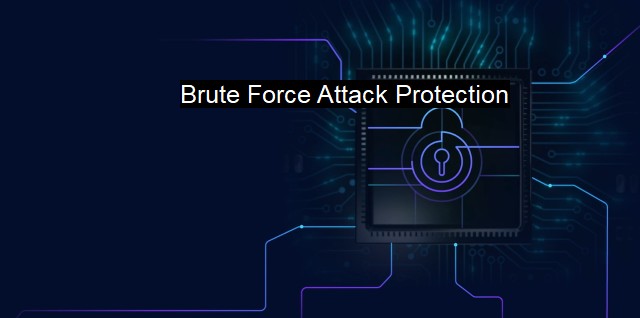What is Brute Force Attack Protection?
Protecting Your Online Security: The Threat of Brute Force Cyber Attacks and How to Safeguard Against Them
In the context of cybersecurity and antivirus efforts, 'Brute Force Attack Protection' is a critical facet worth understanding in depth. a brute force attack is a trial-and-error method used by hackers to decode encrypted data such as passwords or data encryption standards (DES) keys, through exhaustive effort (using brute force) rather than employing intellectual strategies.A brute force attack is the simplest, yet the most time-consuming type of cybersecurity attack, which hackers often carry out using automated software. These automated technologies try many combinations of username and password to gain unauthorized access to an account or server. the success ratio of a brute force attack significantly depends on the length and complexity of the password and on the computing power of the hacker's system.
Brute force attacks can be incredibly harmful. They do not just pose threats to an individual's privacy and security, but also that of companies and governments. With unauthorized access to their systems, hackers can wreak havoc by stealing confidential data, manipulating sensitive information, launching attacks on other networks, or even rendering systems inoperable.
Brute Force Attack Protection, therefore, serves as a shield to protect data from these types of attacks by making them computationally impractical. Several techniques associated with this kind of protection can help to detect and prevent these attacks.
One common approach to prevent brute force attack is by implementing account lockouts. After a certain number of failed login attempts, the system will lock the user account for a certain time frame, making continuous automated attempts unsuccessful. This directly makes the attack unfeasibly long to carry out.
Another protection method is progressively delaying the timing of login attempts. If a user or attacker makes several unsuccessful login attempts in a short time, the system increases the time required between attempts. It dramatically increases the total time necessary to complete the brute force attack, discouraging the attacker's efforts.
Employing CAPTCHA tests can also differentiate between humans and automated scripts, thus preventing a brute force attack. These randomly generated challenges require the user to enter a set of characters or solve a simple puzzle, which is currently beyond the capabilities of AI.
Implementing two-factor authentication or multi-factor authentication serves as an additional layer of protection by providing an extra step of confirming the user's identity, thus making the hacker's job even more complicated. Besides just entering the password, the user is required to provide a piece of information that only they can access, like a code sent to their mobile number or email.
Strong password policies are also a great deterrent against brute force attacks. By requiring users to create complex, lengthy, and unique passwords, including special characters, numbers, and mix of upper and lower case letters, an organization can easily render a brute force attack impractical due to the sheer number of possible combinations.
Lastly, firewalls, intrusion detection and prevention systems (IDS/IPS), and security software can also identify and prevent brute force attack attempts by recognizing repeated failed login attempts from the same IP address. They can block that IP address or alert the system or network administrator about the potential threat.
Investing in Brute Force Attack Protection is a worthwhile decision for any individual or organization, owing to the dangers such attacks entail. Along with this, creating awareness amongst users about the importance of secure and strong passwords, showing login attempt warnings, and conducting regular system security audits goes a long way in maintaining robust cybersecurity entire setup.

Brute Force Attack Protection FAQs
What is a brute force attack?
A brute force attack is an attempt to guess a secret like a password or a PIN by trying every possible combination. In cybersecurity, a brute force attack is commonly used to gain unauthorized access to an account or system.How can I protect my system from a brute force attack?
One of the best ways to protect your system from a brute force attack is to use a strong and complex password. Additionally, implementing multi-factor authentication and limiting the number of failed login attempts can also help mitigate the risk of a brute force attack.Can antivirus software protect against brute force attacks?
Antivirus software cannot specifically protect against brute force attacks, but it can detect and remove malware that may be used to execute a brute force attack. It is important to have both antivirus software and strong password practices in place to protect against cybersecurity threats.What should I do if my system has been subjected to a brute force attack?
If you suspect that your system has been subjected to a brute force attack, immediately change all passwords and implement stronger security measures such as multi-factor authentication. It is also recommended to report the attack to your organization’s cybersecurity team and consider implementing additional security measures such as firewalls and intrusion detection systems.| | A | | | B | | | C | | | D | | | E | | | F | | | G | | | H | | | I | | | J | | | K | | | L | | | M | |
| | N | | | O | | | P | | | Q | | | R | | | S | | | T | | | U | | | V | | | W | | | X | | | Y | | | Z | |
| | 1 | | | 2 | | | 3 | | | 4 | | | 7 | | | 8 | | |||||||